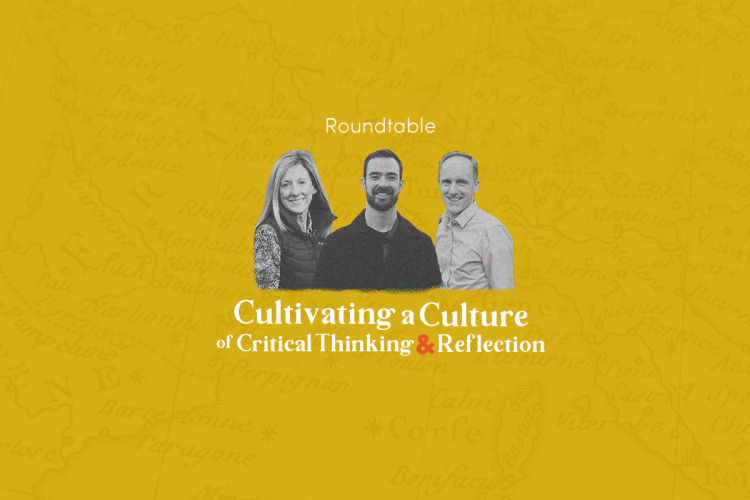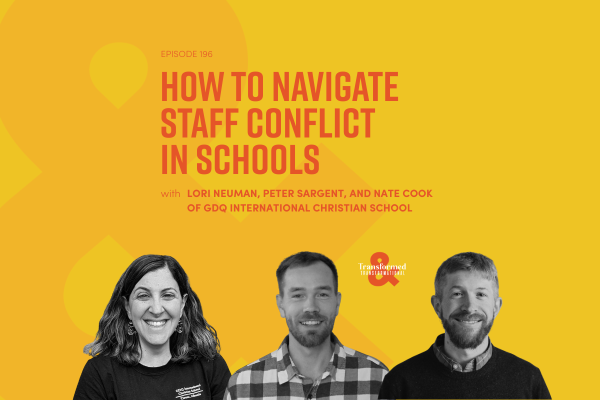131: Round Table: Creating a Culture of Critical Thinking and Reflection

Looking for fresh ways to cultivate critical thinking and reflection in your classroom? Tune in to hear Heather talk with three TeachBeyond educators about the value of critical thinking, examples from their classrooms, and practical steps to get started.
- Cultivating a Culture of Critical Thinking by Diane Peneycad
- Cultivating a Culture of Reflection by Leighton Helwig
- “Simply put, critical thinking is what your brain does with facts and information.” - Diane
- “Critical thinking is such an essential part of our image-bearing nature. This is a great privilege we have. We don’t live by instinct like animals, but we get to image God.” - Jacob
- “If we can eat and drink to the glory of God, we can also think to the glory of God.” - Jacob
- “We do want students to ask questions, but we don’t want them to be cynical in an unhealthy way, so I think there’s a good balance to have a teachable attitude.” - Jacob
- “There has to be a balance of responsibility to content and objectives and what’s required for us to teach, while still offering an environment or opportunity for the questioning and the thinking. I think if I would err on the side of one or the other, I would err on the side of thinking and equipping for future consumption of content.” - Leighton
- “There are times we’re going to go really deep, and there are times when it may not, but we can still engage them in the thinking process at various levels… Students need time at various levels of thinking throughout their day and throughout their courses.” - Diane
- “You need to create an environment that’s a safe environment, that they understand that we’re going to be thinking and there may not be one right answer.” - Diane
- Project Zero’s Thinking Routines Toolbox
- “Modeling is super important. We bring our own transformed life into the classroom.” - Diane
- “The best-case scenario is when students choose to use [a tool] on their own for their own learning. That’s how you know it’s been embedded in the way that they are thinking.” - Leighton
- “Never say what a kid can say. In other words, I need to create the environment where I’m asking the right question that the student is then going to frame the response.” - Diane
- “It’s okay to disagree, but how do we do so respectfully? How do we honor each other as image bearers of Christ?” - Diane
- “What makes you say that?” - Diane
- “I think it’s really important for teachers to be willing to seize those teachable moments.” - Jacob
- “God created our minds to think. If we’re not creating environments to have that happen, then we’re not allowing the full potential of what God has created in our classroom.” - Leighton
- “As you develop a school-wide culture of thinking, it just becomes a way of life for teachers and students.” - Diane
- “To be able to go to that deep place of thought, we have to rest. We have to rest to reflect.” - Jacob
- Sign up to receive TeachBeyond’s OnPractice publication here!
What’s changing our lives:
- Heather: Time to journal and reflect
- Jacob: Journaling
- Diane: Being able to ride her bicycle inside
- Leighton: How to Know a Person by David Brooks
Weekly Spotlight: Christian International School of Prague
We’d love to hear from you! podcast@teachbeyond.org
Podcast Website: https://teachbeyond.org/podcast
Learn about TeachBeyond: https://teachbeyond.org/
Related Stories
Tune in to hear about Christmas celebrations in different cultures and classrooms around the globe!
It takes humility, intentionality, and the power of the Holy Spirit to create a workplace of trust and unity amongst school staff. Hear from...
How might everyday classroom moments become places where God’s presence is made known? In this conversation, Dr. David I. Smith invites teachers to...







